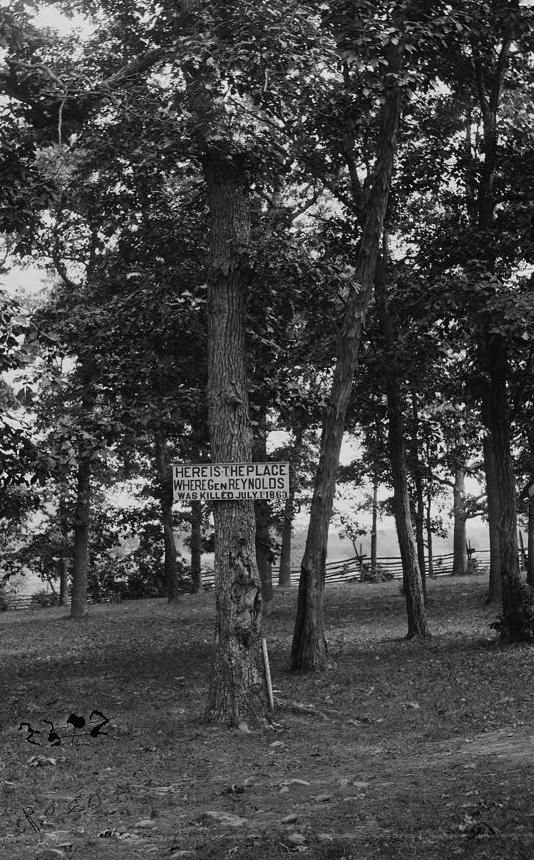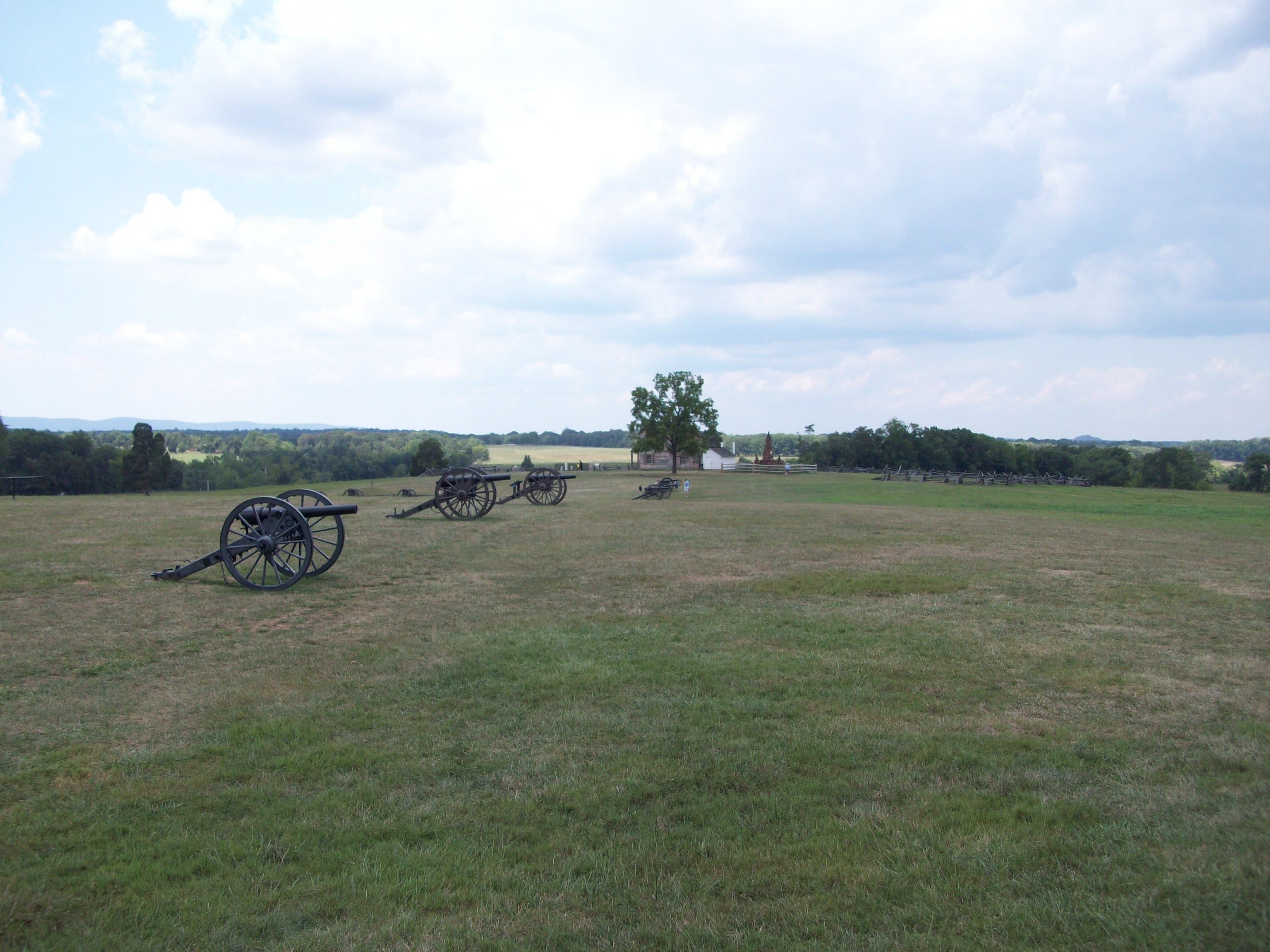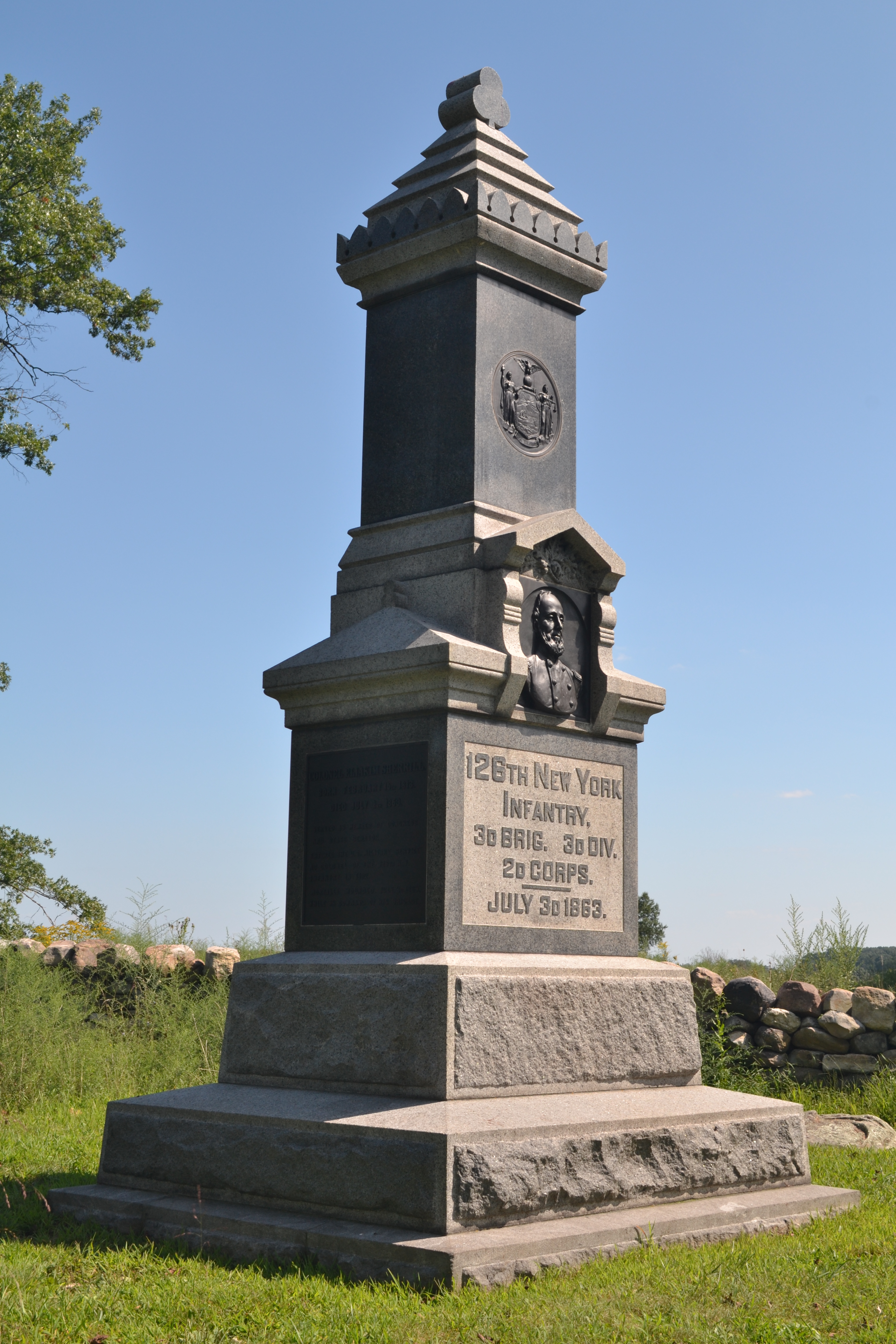|
151st Pennsylvania Infantry
The 151st Pennsylvania Infantry was a Union Army regiment serving for a term of nine months during the American Civil War. The regiment sustained seventy-six percent casualties in the Battle of Gettysburg, its only major engagement. Following the war, it also became known as "The Schoolteachers' Regiment" due to the war-time enrollment of at least sixty teachers in the regiment. History Forming of the regiment The regiment was recruited from across the Commonwealth of Pennsylvania during the early fall of 1862, with companies raised from the following counties: * Companies A and C, Susquehanna County, Pennsylvania, Susquehanna County * Company B, Pike County, Pennsylvania, Pike County * Company F, Warren County, Pennsylvania, Warren County * Company D, Juniata County, Pennsylvania, Juniata County * Companies E, G, H, K, and part of I, Berks County, Pennsylvania, Berks County * Remainder of Company I, Schuylkill County, Pennsylvania, Schuylkill County The 151st Pennsylvania was f ... [...More Info...] [...Related Items...] OR: [Wikipedia] [Google] [Baidu] |
Union (American Civil War)
During the American Civil War, the Union, also known as the North, referred to the United States led by President Abraham Lincoln. It was opposed by the secessionist Confederate States of America (CSA), informally called "the Confederacy" or "the South". The Union is named after its declared goal of preserving the United States as a constitutional union. "Union" is used in the U.S. Constitution to refer to the founding formation of the people, and to the states in union. In the context of the Civil War, it has also often been used as a synonym for "the northern states loyal to the United States government;" in this meaning, the Union consisted of 20 free states and five border states. The Union Army was a new formation comprising mostly state units, together with units from the regular U.S. Army. The border states were essential as a supply base for the Union invasion of the Confederacy, and Lincoln realized he could not win the war without control of them, especially Maryla ... [...More Info...] [...Related Items...] OR: [Wikipedia] [Google] [Baidu] |
10th Pennsylvania Reserve Regiment
The 10th Pennsylvania Reserve Regiment also known as the 39th Pennsylvania Volunteer Infantry was an infantry regiment that served in the Union Army as part of the Pennsylvania Reserves infantry division during the American Civil War. Organization Service The 10th Pennsylvania Reserves was organized at Camp Wilkins near Pittsburgh, Pennsylvania beginning June 3, 1861 and mustered on July 21, 1861 under the command of Colonel John S. McCalmont. The regiment was attached to 3rd Brigade, McCall's Pennsylvania Reserves Division, Army of the Potomac, to March 1862. 3rd Brigade, 2nd Division, I Corps, Army of the Potomac, to April 1862. 3rd Brigade, McCall's Division, Department of the Rappahannock, to June 1862. 3rd Brigade, 3rd Division, V Corps, Army of the Potomac, to August 1862. 3rd Brigade, 3rd Division, III Corps, Army of Virginia, to September 1862. 3rd Brigade, 3rd Division, I Corps, Army of the Potomac, to February 1863. 3rd Brigade, Pennsylvania Reserves Division, XXII ... [...More Info...] [...Related Items...] OR: [Wikipedia] [Google] [Baidu] |
Belle Plain, Virginia
Belle Plains, Virginia (sometimes spelled as Belle Plain)The current name of the road leading to the area and the USGS-based National Mahereuse the "Belle Plains" spelling. was a steamboat landing and unincorporated settlement on the south bank of Potomac Creek off the Potomac River, in Stafford County, Virginia. In the early 19th-century, Belle Plains served as landing for steamboats to Washington, D.C. The landing and its hotel were in turn was serviced by stagecoaches running to and from nearby Fredericksburg, Virginia where passengers would connect with the Richmond, Fredericksburg, and Potomac Railroad. Bell Plains and Potomac Creek fell by the wayside when the railroad bypassed them, reaching Aquia Landing on Aquia Creek as its terminus wharf in 1842. Belle Plains again rose to prominence during the American Civil War, where it was used as an alternate supply point to Aquia Landing by the Union Army of the Potomac. It became a lead supply point during the Overland Campaig ... [...More Info...] [...Related Items...] OR: [Wikipedia] [Google] [Baidu] |
Army Of The Potomac
The Army of the Potomac was the principal Union Army in the Eastern Theater of the American Civil War. It was created in July 1861 shortly after the First Battle of Bull Run and was disbanded in June 1865 following the surrender of the Confederate Army of Northern Virginia in April. History The Army of the Potomac was created in 1861 but was then only the size of a corps (relative to the size of Union armies later in the war). Its nucleus was called the Army of Northeastern Virginia, under Brig. Gen. Irvin McDowell, and it was the army that fought (and lost) the war's first major battle, the First Battle of Bull Run. The arrival in Washington, D.C., of Maj. Gen. George B. McClellan dramatically changed the makeup of that army. McClellan's original assignment was to command the Division of the Potomac, which included the Department of Northeast Virginia under McDowell and the Department of Washington under Brig. Gen. Joseph K. Mansfield. On July 26, 1861, the Department of the S ... [...More Info...] [...Related Items...] OR: [Wikipedia] [Google] [Baidu] |
John S
John is a common English name and surname: * John (given name) * John (surname) John may also refer to: New Testament Works * Gospel of John, a title often shortened to John * First Epistle of John, often shortened to 1 John * Second Epistle of John, often shortened to 2 John * Third Epistle of John, often shortened to 3 John People * John the Baptist (died c. AD 30), regarded as a prophet and the forerunner of Jesus Christ * John the Apostle (lived c. AD 30), one of the twelve apostles of Jesus * John the Evangelist, assigned author of the Fourth Gospel, once identified with the Apostle * John of Patmos, also known as John the Divine or John the Revelator, the author of the Book of Revelation, once identified with the Apostle * John the Presbyter, a figure either identified with or distinguished from the Apostle, the Evangelist and John of Patmos Other people with the given name Religious figures * John, father of Andrew the Apostle and Saint Peter * Pope J ... [...More Info...] [...Related Items...] OR: [Wikipedia] [Google] [Baidu] |
Manassas National Battlefield Park
Manassas National Battlefield Park is a unit of the National Park Service located in Prince William County, Virginia, north of Manassas that preserves the site of two major American Civil War battles: the First Battle of Bull Run, also called the Battle of First Manassas, and the Second Battle of Bull Run or Battle of Second Manassas. It was also where Confederate General Thomas J. Jackson acquired his nickname "Stonewall". The park was established in 1936 and listed on the National Register of Historic Places on October 15, 1966. More than 700,000 people visit the battlefield each year. The Henry Hill Visitor Center, on Sudley Road by the south entrance to the park, offers exhibits and interpretation regarding the First Battle of Bull Run, including Civil War-era uniforms, weapons, field gear and an electronic battle map. The center offers the orientation film "Manassas: End of Innocence", as well as a bookstore. A recent find in 2014 unearthed bone fragments that led to the ... [...More Info...] [...Related Items...] OR: [Wikipedia] [Google] [Baidu] |
Bull Run (Occoquan River)
Bull Run is a U.S. Geological Survey. National Hydrography Dataset high-resolution flowline dataThe National Map, accessed August 15, 2011 tributary of the Occoquan River that originates from a spring in the Bull Run Mountains in Loudoun County, Virginia, and flows south to the Occoquan River. Bull Run serves as the boundary between Loudoun County and Prince William County, and between Fairfax County and Prince William County. Bull Run is primarily associated with two battles of the American Civil War: the First Battle of Bull Run (July 21, 1861) and the Second Battle of Bull Run (August 28–30, 1862), both Confederate victories. A narrow part of the creek called Yates Ford (near Manassas) is the scene of the Battle of Occoquan, and downstream about one mile is the current Yates Ford Road bridge between Fairfax and Prince William counties. See also *List of rivers of Virginia This is a list of rivers in the U.S. state of Virginia. By drainage basin This list is arranged by ... [...More Info...] [...Related Items...] OR: [Wikipedia] [Google] [Baidu] |
Union Mills, Virginia
Union Mills is an unincorporated community in Fluvanna County, in the U.S. state of Virginia. In the mid-19th century, it was a point along the stagecoach route between Richmond Richmond most often refers to: * Richmond, Virginia, the capital of Virginia, United States * Richmond, London, a part of London * Richmond, North Yorkshire, a town in England * Richmond, British Columbia, a city in Canada * Richmond, California, ... and Staunton. References * Unincorporated communities in Virginia Unincorporated communities in Fluvanna County, Virginia {{FluvannaCountyVA-geo-stub ... [...More Info...] [...Related Items...] OR: [Wikipedia] [Google] [Baidu] |
126th New York Volunteer Infantry
The 126th New York Infantry Regiment was an infantry regiment in the Union Army during the American Civil War. Service The 126th New York Infantry was organized at Geneva, New York, and mustered in for three years service on August 22, 1862, under the command of Colonel Eliakim Sherrill. The regiment was attached to Miles' Command, Harpers Ferry, Virginia, September 1862. Camp Douglas, Chicago, Illinois, to December 1862. 3rd Brigade, Casey's Division, Defenses of Washington, D.C., to February 1863. 3rd Brigade, Casey's Division, XXII Corps, to April 1863. 3rd Brigade, Abercrombie's Division, XXII Corps, to June 1863. 3rd Brigade, 3rd Division, II Corps, Army of the Potomac, to March 1864. 3rd Brigade, 1st Division, II Corps, to June 1864. Consolidated Brigade, 1st Division, II Corps, to November 1864. 3rd Brigade, 1st Division, II Corps, to June 1865. The 126th New York Infantry mustered out of service June 3, 1865. Recruits and veterans were transferred to the 4th New York ... [...More Info...] [...Related Items...] OR: [Wikipedia] [Google] [Baidu] |
125th New York Volunteer Infantry Regiment
The 125th New York Infantry Regiment was a volunteer regiment from Rensselaer County, New York, during the American Civil War. Formed during the summer of 1862, the unit was officially mustered into United States Service on 27–29 August 1862, by Col. George L. Willard. He had seen previous service in the War of the Rebellion and in the Mexican War as well. Levin Crandall was commissioned lieutenant colonel, and James C. Bush major. The unit was mustered out on 5 June 1865. Regimental history Colonel John A. Griswold was authorized, 28 July 1862, to raise this regiment in Rensselaer county; on his resignation, Col. George L. Willard succeeded him 15 August 1862; the regiment was organized at Troy and there mustered in the service of the United States for three years 27–29 August 1862. The men not entitled to be mustered out with the regiment were on 5 June 1865, transferred to the 4th Artillery. The regiment left Troy, 30 August 1862, and proceeded by rail to Martinsburg, ... [...More Info...] [...Related Items...] OR: [Wikipedia] [Google] [Baidu] |
111th New York Volunteer Infantry Regiment
The 111th New York Infantry Regiment was organized at Auburn, New York, to answer the call by Abraham Lincoln for 300,000 more troops to fight in the American Civil War. Over the next three years, this regiment lost the fifth greatest number of men among all New York regiments. History Jesse Segoine was authorized on July 18, 1862, to begin recruiting a regiment of men within the Cayuga and Wayne Counties, New York. As Segoine was able to raise the men, he received a commission of Colonel and commander of this, the 111th New York Infantry Regiment. The regiment was raised in almost a month's time, and mustered into service in Auburn, New York, on August 20, 1862. Regimental organization Company A – Principally recruited from Wayne County. Company B – Principally recruited from Wayne County. Company C – Principally recruited from Wayne County. Company D – Principally recruited from Wayne County. Company E – Principally recruited from Wayne County. Company F – ... [...More Info...] [...Related Items...] OR: [Wikipedia] [Google] [Baidu] |
39th New York Volunteer Infantry Regiment
The 39th New York Infantry Regiment, known as the "Garibaldi Guard" after the Italian revolutionary, Giuseppe Garibaldi, was an infantry regiment that served in the Union Army during the American Civil War. Service This regiment was mustered (assembled) in New York City by the Union Defense Committee, under the leadership of Col. Frederick George D'Utassy by special authority from the War Department during the Civil War of the United States. On May 27, 1861, they deployed to Washington D.C., having been authorized for a period of three years by New York State. Initially, the regiment was divided into eleven companies of men of different national heritage: three German, three Hungarian, one Swiss, one Italian, one French, one Spanish, and one Portuguese. On May 31, 1863, the regiment was consolidated into four companies: A, B, C and D. The regiment expanded as new companies were recruited in the field. On December 8, 1863, Company E was added; on December 14, 1863, Company ... [...More Info...] [...Related Items...] OR: [Wikipedia] [Google] [Baidu] |






